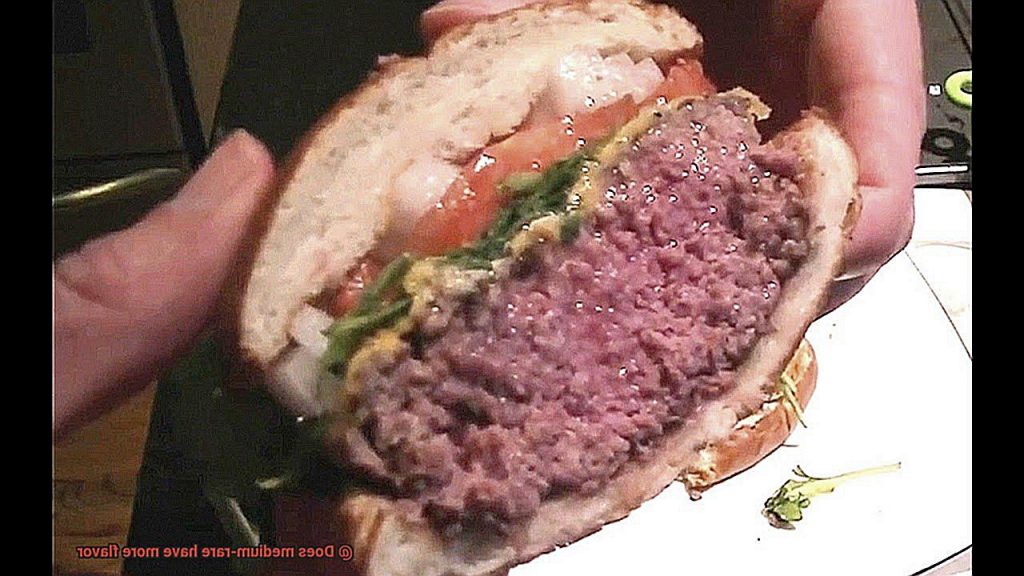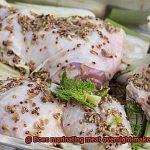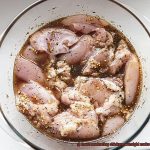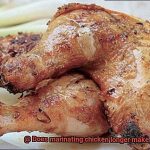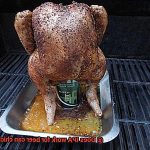Who doesn’t love a mouth-watering, delicious steak? But have you ever wondered how the cooking temperature affects the flavor of your meat? Among food enthusiasts, there’s an ongoing debate about whether medium-rare steaks are more flavorful than other doneness levels.
If you’ve ever been to a steakhouse, you know that the server will ask, “How would you like your steak cooked?” The choices typically range from rare to well-done, with medium-rare sitting right in the middle. But what makes medium-rare so special?
One reason why medium-rare steaks are considered more flavorful is that they’re cooked at a lower temperature. This allows the meat to retain its natural juices, resulting in a tender and succulent steak with an enhanced depth of flavor.
However, taste preferences are subjective and some people may prefer the distinctive flavor profile of a well-done steak. Additionally, factors such as the cut of meat and marinades or seasonings can also influence the taste of your steak.
So, does medium-rare have more flavor? Ultimately, it depends on your personal taste buds. But for those who crave a perfectly cooked juicy steak bursting with flavor, medium-rare might be just what you need.
Contents
What is Medium-Rare?
Medium-rare refers to beef that has been cooked on the outside but is still pink and juicy on the inside. This level of doneness is achieved by cooking the meat to an internal temperature of around 130-135°F (54-57°C). The result is a steak that is tender, flavorful, and simply delicious.
Many chefs and foodies prefer medium-rare beef because they believe it has more flavor than beef that is cooked to a higher temperature. The lower cooking temperature allows the fat and juices to stay inside the meat, resulting in a more succulent and tasty steak. But taste is subjective, and not everyone agrees with this notion. Some argue that well-done beef can be just as flavorful if it’s cooked properly.
It’s important to note that the preference for medium-rare or well-done beef varies from person to person. Some people may prefer their meat to be cooked more thoroughly for health and safety reasons, while others may enjoy the taste of rare beef. Ultimately, it comes down to personal taste and preference.
So why has medium-rare become such a popular choice for steak lovers? One reason is the science of cooking. When beef is cooked at high temperatures for an extended period of time, it can produce harmful chemicals called heterocyclic amines (HCAs) and polycyclic aromatic hydrocarbons (PAHs). These chemicals not only increase the risk of cancer but can also affect the taste and texture of the meat.
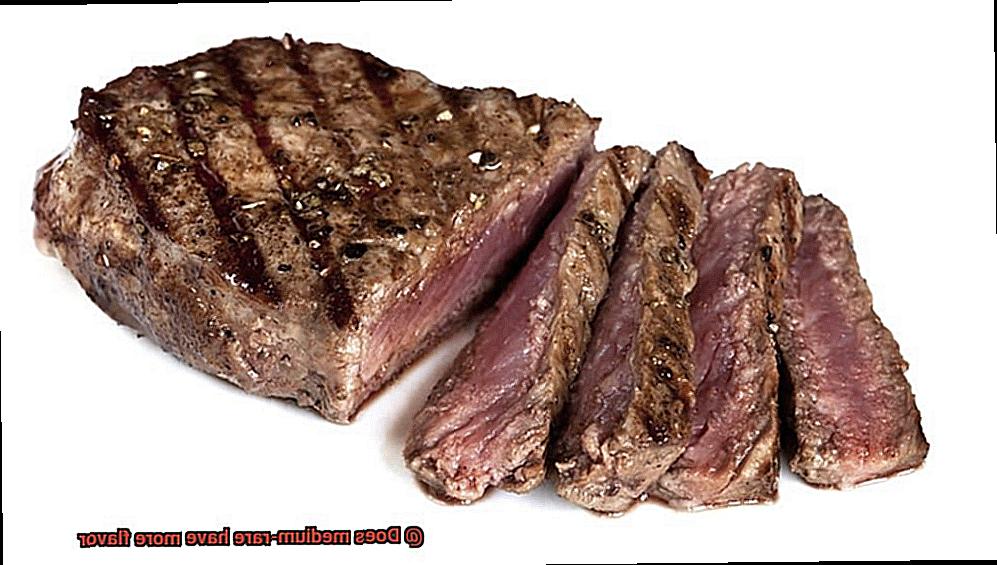
Cooking meat at lower temperatures for a shorter period of time minimizes the production of HCAs and PAHs while retaining the natural flavors of the meat. Additionally, cooking beef at lower temperatures for a longer period of time can also break down collagen in the meat, resulting in a more tender texture.
Does Medium-Rare Have More Flavor?
Steak connoisseurs know that the perfect cut of meat is a work of art. But with the many levels of doneness to choose from, it can be difficult to decide which temperature is the best fit. While rare and well-done are popular options, it’s medium-rare that’s often touted as the pinnacle of flavor and tenderness. But is there really more flavor to be found in a medium-rare steak?
To fully understand the answer to this question, we must first look at what happens to meat as it cooks. As heat enters the muscle fibers, they undergo a process called denaturation and coagulation, causing the meat to firm up and change color from red to pink and ultimately brown.
When meat is cooked beyond medium-rare, its muscle fibers begin to contract and release moisture, resulting in a tough and dry texture. But when cooked rare, the meat may be too soft and lack the desired texture. Medium-rare strikes a balance between these two extremes and allows for a slightly charred exterior while still retaining a juicy, tender interior.
In addition to texture, rendering fat plays a key role in flavor. Cooking meat at a lower temperature allows for fat to render slowly and infuse the steak with flavorful juices. When cooked to medium-rare, these juices are retained within the meat, creating a depth of flavor that other levels of doneness simply can’t match.
But what about taste preferences? While everyone’s palate is unique, many steak enthusiasts agree that medium-rare offers a complexity of flavors that can’t be replicated with other levels of doneness. The combination of charred exterior, juicy interior, and rendered fat creates an irresistible bouquet of flavors that leaves diners wanting more.
The Science Behind the Debate
The answer lies in the science behind the debate. Let’s explore the complex factors that make medium-rare meat so irresistible.
The Maillard reaction is the key to unlocking the flavor of medium-rare meat. When meat is exposed to high heat, amino acids and sugars react to form new compounds that give the meat its distinct taste. These compounds continue to form as the meat cooks, but if it’s overcooked, they break down and result in a loss of flavor. That’s why medium-rare is hailed as the sweet spot – it allows enough time for the Maillard reaction to occur without compromising flavor.
But it’s not just about flavor – texture plays a significant role too. Overcooking can cause meat to become tough and dry, detracting from its overall taste. On the other hand, cooking meat to medium-rare retains more of its natural juices and tenderness, creating a more enjoyable eating experience.
However, personal preferences are also important in this debate. While some may prefer well-done meat for its taste and texture, others find medium-rare’s unique flavor profile irresistible. It’s all about finding what suits your palate best and experimenting with different cooking techniques.
Benefits of Cooking Meat at Lower Temperatures
Perhaps it’s time to consider the benefits of cooking meat at lower temperatures. Not only will it result in a more delicious meal, but it also has numerous health benefits.
When meat is cooked at high temperatures, it tends to lose moisture and become tough. However, when cooked at lower temperatures, it retains its juices resulting in a succulent, mouth-watering meal. Slow-cooked meats like brisket and chuck roast are best cooked at lower temperatures for maximum tenderness and flavor.
Enzymes in the meat break down proteins and connective tissues when meat is cooked at lower temperatures. This results in a more tender and flavorful meat, enhancing the taste of your dish. You’ll be able to serve up restaurant-quality meals that will impress your guests every time.
In addition to improving the flavor of your meals, cooking meat at lower temperatures also preserves its nutritional value. High heat can destroy essential nutrients like vitamins B and C, but low-temperature cooking methods like braising or slow-roasting can help retain these nutrients. So not only will your meal taste great but it will also be healthier for you and your loved ones.
Perhaps the most significant benefit of cooking meat at lower temperatures is the reduction of harmful compounds like HCAs and PAHs. These compounds are known to increase the risk of cancer and are formed when meat is cooked at high temperatures and exposed to smoke or flames. By reducing the heat and time exposed to smoke or flames, you can reduce the risk of these harmful compounds forming.
Potential Health Concerns from Cooking Meat at High Temperatures
One of the most significant concerns is the formation of harmful compounds called heterocyclic amines (HCAs) and polycyclic aromatic hydrocarbons (PAHs). These compounds form when meat is cooked at high temperatures, such as grilling or broiling. HCAs form when amino acids, sugars, and creatine react at high temperatures, while PAHs are formed when fat drips onto hot coals or heating elements, causing smoke and flames that deposit PAHs on the surface of the meat.
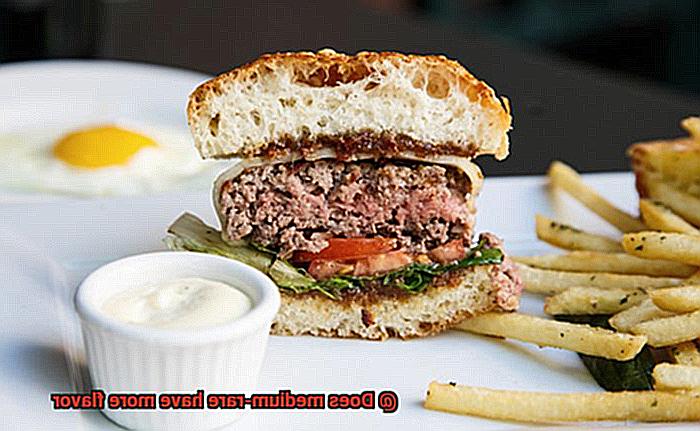
Studies have shown that the longer and hotter the meat is cooked, the higher the levels of these harmful compounds. So what can you do to reduce your exposure? Cook your meat to medium-rare or rare instead of well-done. This can significantly decrease your risk of exposure to these harmful compounds.
However, cooking meat to lower temperatures may increase the risk of foodborne illnesses such as E. coli and salmonella. Proper food safety guidelines should always be followed when cooking meat to lower temperatures.
Tips for Perfectly Cooked Medium-Rare Meat
Medium-rare meat is cooked to an internal temperature of 135-145°F, with a warm pink center and a slightly seared exterior. Follow these tips to achieve the perfect medium-rare:
Start with high-quality meat
Choosing a cut of meat that is marbled with fat, like ribeye or sirloin, can add flavor and help keep the meat moist during cooking.
Let the meat come to room temperature
Taking your meat out of the fridge and allowing it to sit at room temperature for about 30 minutes before cooking ensures even cooking and prevents overcooking.
Season generously
Add your favorite seasoning blend or sprinkle salt and pepper generously to the meat for extra flavor.
Use high heat
Sear the meat on all sides until a crust forms, then reduce the heat slightly and continue cooking until it reaches your desired level of doneness. This technique seals in the juices and creates a flavorful crust.
Check for doneness with a thermometer
The best way to ensure that your meat is cooked to perfection is by using a meat thermometer. For medium-rare, aim for an internal temperature of 130-135°F.
Let the meat rest before slicing
Allow the meat to rest for a few minutes before slicing to allow the juices to redistribute throughout the meat. This results in a more flavorful and tender final product. Tenting the meat with foil will keep it warm while it rests.
Different Types of Cuts and Their Best Temperature Preferences
To achieve the perfect flavor and texture, it’s essential to know the best temperature preferences for different cuts of meat when grilling. Here are five sub-sections that explain the nuances of temperature preferences for various cuts of meat.
Beef Cuts
Beef is a popular choice for grilling, and different cuts require specific temperature preferences to get the best results.
For instance, a ribeye steak benefits from a higher temperature of around 130-135°F for medium-rare, while a tenderloin requires a lower temperature of around 120-125°F for medium-rare.
Flank steak and skirt steak are leaner cuts that need a quick sear at high heat to lock in their juices and flavors while retaining tenderness.
Pork Cuts
Pork is another popular meat for grilling, but it has different temperature preferences than beef. The USDA recommends cooking pork to an internal temperature of at least 145°F to avoid foodborne illness. However, pork chops cooked at this temperature can still be juicy and flavorful.
Poultry Cuts
Chicken and turkey are staples for grilling but require a higher temperature than beef or pork due to safety concerns. It’s crucial to cook poultry to an internal temperature of 165°F to ensure that harmful bacteria like salmonella are killed. While some people may prefer their poultry cooked to medium-rare, it’s not recommended due to the risk of foodborne illness.
Tougher Beef Cuts
Some beef cuts like brisket or chuck roast require a lower and slower cooking method to break down their connective tissues and become tender. These tougher cuts benefit from being cooked at temperatures around 200-225°F for several hours until they reach an internal temperature of 195-205°F.
Personal Preference
While there are general guidelines for the best temperature preferences for different cuts of meat, personal preference plays a significant role. Some people prefer their meat rare, while others prefer it well-done. Experimentation with different temperature preferences can result in new and exciting flavor profiles.
Conclusion
To sum up, the question of whether medium-rare steaks have more flavor is a matter of personal preference. However, many culinary experts and food connoisseurs favor medium-rare beef because it retains its natural juices, resulting in a tender and succulent steak with an enhanced depth of flavor. The perfect balance between texture and taste, medium-rare allows for a slightly charred exterior while still maintaining a juicy, tender interior that melts in your mouth.
The secret to unlocking the tantalizing flavor of medium-rare meat lies in the Maillard reaction. When exposed to high heat, amino acids and sugars react to create new compounds that give meat its distinct taste. Cooking meat at lower temperatures also preserves its nutritional value while minimizing harmful compounds like HCAs and PAHs.
Achieving the ideal medium-rare steak requires selecting high-quality meat, allowing it to reach room temperature, seasoning generously, searing over high heat, checking doneness with a thermometer, and letting it rest before slicing. Different cuts of meat require specific temperature preferences for optimal results. Experimenting with different cooking temperatures can lead to exciting new flavor profiles.
Ultimately, whether medium-rare has more flavor depends on individual taste buds. However, for those who crave a perfectly cooked juicy steak bursting with flavor, medium-rare is undoubtedly worth trying out.

